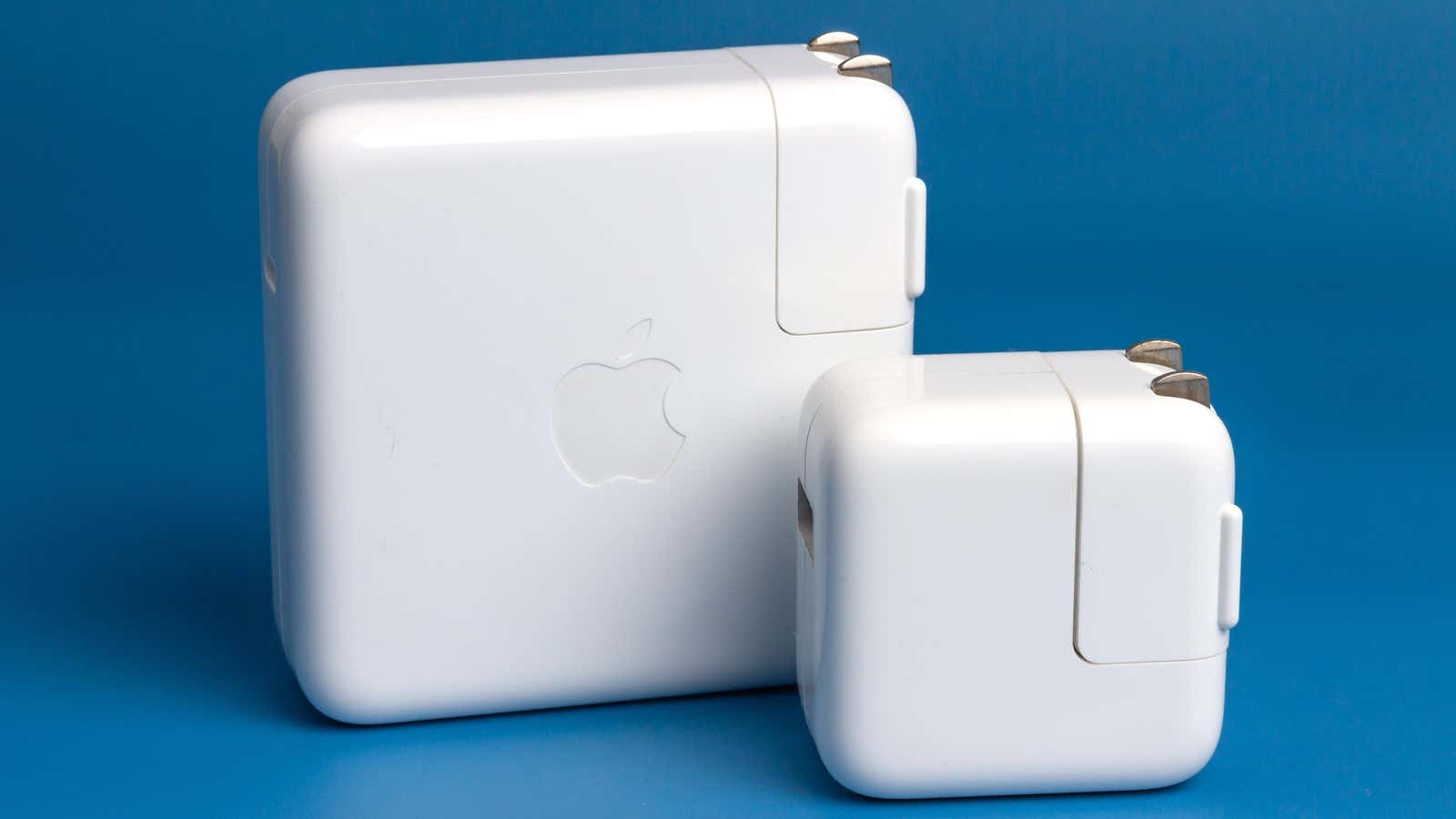Don’t Let Your MacBook Charger Fall Off the Wall

Whether you have a MacBook, MacBook Air, or MacBook Pro, your charger probably has one fatal flaw: the plug. The power adapter should plug directly into a wall outlet, which is great for small chargers. However, the bigger your MacBook, the bigger the brick, all without changing the design. So your massive power adapter has to hang on the wall or balance on an extension cord, fighting gravity for its life.
Obviously, weight is the main component here. I can’t count the number of times I’ve had to prop up an extension cord after my MacBook Pro’s charger knocked everything over. Another part of the problem, however, is that the charger plug is removable. When you connect your 10-ton charger to the wall, its mass sometimes pulls the plug right out of the adapter ( it happened to me many times).
Have you ever wondered why the fork is removable? It doesn’t make much sense out of the box. Of course, the pins can warp, and being able to replace them without throwing the charger away is a plus. But since the pins don’t bend every day, and the charger falls off the wall every day, such a compromise doesn’t seem worthwhile. Well, it’s because of this .
Apple sells a power adapter extension cable that plugs into this port on the charger to increase the range of the power adapter. Of course, it’s not because it’s cool. Take a look at the other end of the extension cable. You’ll find a traditional three-prong plug that plugs nicely and neatly into any wall or floor outlet. Neither gravity nor gentle force will pull this plug out, and that’s what we stand for. On the other hand, your power adapter is hanging on the floor and not connected to anything other than an extension cable and a USB-C cord.
That was the life of a MacBook user, and it was great. For years, Apple included these power adapter extensions with every MacBook purchase. In fact, that was the default way to use the charger: while you could replace the extension cable with a tiny plug, why would you? Your charger would obviously fall out of the wall or take up too much space on the power strip. Why not use an extension cord?
The only reason for this would be that Apple stopped including it on their MacBook, which it did. When the company switched from MagSafe charging to USB-C charging in 2015, they also ditched the extension cable in the box. Ironically, the switch to USB-C was an improvement. MagSafe cables used to be welded to the power adapter, so if the cable broke, your charger was almost dead. Having a detachable USB-C cable made so much sense that it almost made up for the lack of MagSafe and an extension cable. Nearly.
Of course, MagSafe is back today with the latest MacBook Air and MacBook Pro with a removable USB-C connector. However, the extension cord is nowhere to be seen.
The only modern power adapter that Apple doesn’t apply to is the Dual USB-C Charger you can order with the M2 MacBook Pro. This adapter has a unique design and is not compatible with an extension cable. Again, its unique design means you won’t be able to take it apart, so this solves at least one problem.
I cannot recommend this extension cord enough. It lowers your MacBook’s giant power bank to the floor and extends your reach to the nearest outlet. While Apple is selling it for $19, I wouldn’t be surprised if you know someone with one of these in storage. Anyone who bought a MacBook before 2015 most likely has one somewhere , and it’s still compatible with modern power adapters. However, be careful: if they still have a MacBook, they may not want to give it up.